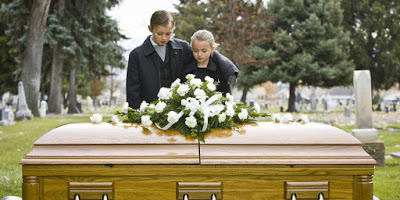The past six weeks has been a challenging time for my family, my medical practice, my young patients, and my community. My father, a pediatrician for more than a half century and my business partner for 16 years, lost his battle with heart failure, after a five-week hospital stay.
While tackling difficult subjects with children is supposed to be within my expertise as a pediatrician, in reality, there is no “right” way to discuss the end-of-life with them. It never hurts to lead with the truth. My children, ranging in age from 4-9, visited my father in the ICU and each one asked if their grandfather might die. Knowing his chances were less than optimal, I answered their questions as honestly as possible.
One child went every day with me to the hospital, one only wanted to see him twice, and the other two were somewhere in between. The three oldest children cried, openly sharing their feelings during this journey; yet, my four year old was not as demonstrative, which is to be expected based on his developmental age.
After my father passed away, each child has grieved in their own way, sharing things about him they will miss most, while my four year old has only said “I am sad papa died, mommy.” Knowledgeable on the developmental capacity at the tender age of 4, I considered excluding my youngest from the graveside service last week on the presumption he didn’t “need’ to see a process which he could not place in a larger context. That decision would have been short sighted. Instead, I asked my youngest child if he wanted to attend the service. He chose to go with all of us to the cemetery. It was a solemn affair and the children understood the significance of the occasion.
At the conclusion of the service, my brother placed the metal urn into the grave and attendees dropped rose petals on top as they left. Ten years ago, my father, brother, and I stayed after the service for my younger brother in order to shovel dirt ourselves. As a matter of principle, I felt burying my father was a loving way to “take care” of him and show my respect. Each of my children chose to be involved as well, something in which my father would have been proud.
As we worked together, there was a quiet, contemplative energy to the endeavor. The children took turns by handing off the shovel to one another while my husband and I helped guide their movements. My oldest used the tamper and as the process reached completion and oddly, my heart felt calm for the first time that day. “Helping” to bury my father appears to have given my children some much-needed closure as well.
They have returned to their regular activities with a comfort in knowing where my father is and accepting this life transition. In the back of my mind, though, I still wondered about the perspective of my youngest son regarding the service. Then, a few nights ago, we had a notable bedtime conversation.
He asked, “Why did they put papa in a silver can?”
I answered, “They put his ashes in a metal container so they can rest in one place.”
“Did they burn him?” He asked. Explaining cremation to a young year child was not necessarily something for which I had a prepared response, but I led with honesty.
“Why can’t they put his whole self in the grave?” He astutely inquired.
The answer concentrated on the limitation of cemetery plots.
“Why can’t we just dig a bigger hole?” To his credit, these questions were fitting ones.
“We could do that, but we wanted to honor papa’s wishes.” I answered.
His next words reassured me his attendance at the service had been the right decision for him. “Mom, I am glad we helped bury papa. It was nice to take care of him and make sure he is cozy and warm. I miss him and that makes me sad, but I know he is happy in the silver can.”
“Sweetheart, I miss him too. You are right, he is probably happy in the silver can.”
While a four-year-old child has a different understanding of death than most of us, it is our job to help even the youngest among us process their experiences in their own time. They will always land on their feet if we give them the space they need in which to do it in their own way.
